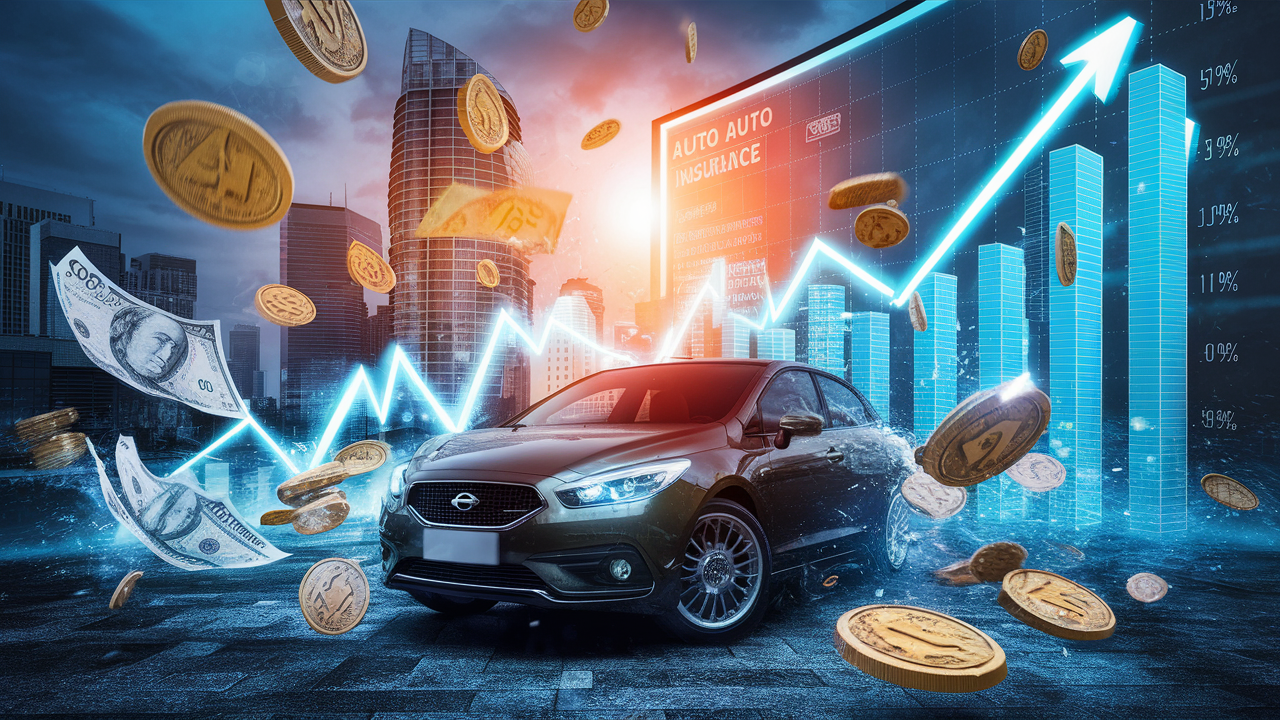Auto Insurance Costs Are Skyrocketing Just as Prices Start to Drop
Insurance costs now make up 20% of total cost of ownership.

Just when you thought you could finally snag that dream machine at a bargain, the universe throws a curveball. Car prices are on the decline, yet auto insurance costs are skyrocketing. Quite dramatically.
While new and used car prices have been on the decline recently, there's a catch - auto insurance premiums are surging at an alarming rate across the United States.
According to Forbes Advisor, the cost of car insurance skyrocketed by a staggering 63.8% between 2014 and 2023, a substantial increase for American drivers.
Alarming Statistics on Rising Premiums
The numbers paint a sobering picture. Bankrate reports that in 2024, American drivers are paying an average annual premium of $2,543, or $212 per month - a whopping 26% increase from the previous year. The Zebra's analysis shows that rates have been climbing year-over-year, with the nationwide average rising from $1,437 in 2017 to $1,483 in 2020, despite a brief pandemic-induced dip.
For those seeking bare-bones liability coverage, Insurify pegs the nationwide average at $104 per month as of 2024. However, for full coverage, consumers should brace for an average of $215 monthly, a significant financial burden.
The Numbers Don't Lie
Auto insurance costs in the United States have been rising significantly in recent years. According to a Forbes Advisor report, the cost of auto insurance increased by a staggering 63.8% between 2014 and 2023.
A report by Bankrate revealed that in 2024, U.S. drivers are paying an average of $2,543 annually, or $212 per month, for car insurance — an increase of 26% from the previous year.
The Zebra's analysis showed that car insurance rates have been increasing year-over-year, with the nationwide average rising from $1,437 in 2017 to $1,483 in 2020, despite a brief dip in 2020 due to the COVID-19 pandemic.
According to Insurify, the nationwide average for full-coverage auto insurance is $215 per month, while liability-only coverage averages $104 per month as of 2024.
Factors Driving Higher Premiums
So what's driving these sky-high premiums? Modern vehicles are equipped with advanced technology, but this also means expensive repairs. Even minor accidents can result in costly bills for insurers due to the complexity of repairing high-tech components such as driver assistance systems and intricate electronics.
Additionally, parts shortages and a lack of skilled labor have led to longer repair times, further exacerbating costs for insurance companies, which are then passed on to consumers through higher premiums.
Financial Strain on Car Owners
For car owners, this financial strain can be substantial. Higher premiums may force some to skimp on comprehensive coverage, leaving them vulnerable to costly out-of-pocket repairs. Furthermore, there is the potential for even higher future premiums due to claims, creating a vicious cycle of rising costs.
According to The Drive, insurance costs vary per person, with expensive new cars incurring much higher premiums than older vehicles with low-cost, low-coverage plans. New cars are the primary culprits behind soaring insurance costs, which jumped 22% since last year, marking the largest increase since the 1970s. Insurance now represents more than a quarter of a new compact car's total cost of ownership, up from 16% in 2019. For compact SUVs, that cost percentage is expected to exceed 20% in 2024.
Rising Costs and Economic Impact
The rising insurance rates are driven by the high cost of repairs for modern vehicles, supply chain issues, and a shortage of mechanics. The complexity of new car technology and manufacturing techniques, such as Tesla's gigacasting, further increase repair costs. Insurance costs for new cars rose by 24% in 2023 and are projected to increase by another 7% in 2024, with rate hikes outpacing wage growth by a staggering 638% last year.
Strategies to Mitigate Rising Premiums
To cope with these increased expenses, consumers are advised to shop around for policies with discounts for safety features, consider higher deductibles to lower premiums, and explore alternative insurance models like usage-based or pay-per-mile plans. Maintaining vehicles regularly and performing DIY repairs, if possible, can also help control costs.
As car prices continue to decline while insurance costs soar, navigating this paradox requires staying informed, proactive, and open to unconventional solutions. By adopting savvy strategies, consumers can mitigate the impact of rising insurance premiums and continue enjoying their vehicles without breaking the bank.